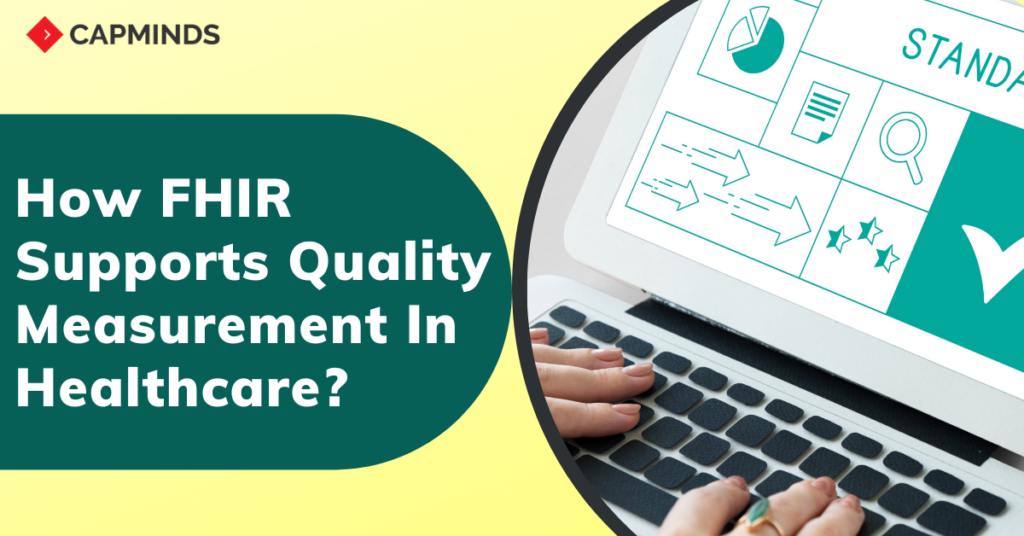How FHIR Supports Quality Measurement In Healthcare?
Doctors’ clipboards still hang outside their patients’ doors. But the handwritten notes don’t tell the complete story. Today’s health records are electronic, and quality measurement is following suit. It takes the right tools to measure healthcare outcomes, which in turn makes improvements possible. More and more, we are seeing FHIR take its place as one of these tools.
In medicine, we measure and track many things, including:
- quality of healthcare services
- patient and family engagement
- patient safety
- resource use
- clinical effectiveness
We all want to make healthcare safe, more efficient, more patient-centered. We all want treatments that are more equitable, timely and effective. Ensuring more effective, patient-focused service is also important to outcomes. A healthcare provider working towards specific goals can use quality measurements to develop a strategy to meet and exceed those goals.
Let’s look at how quality measurement can accomplish this, and how Fast Healthcare Interoperability Resources (FHIR) make it possible.
What is Quality Measurement?
Doctors, hospitals and healthcare systems can use data to measure and improve everything from outpatient facilities to imaging facilities. Healthcare professionals need to specify quality measurement data points in their ongoing quest to make improvements. Measuring these data points allows them to reallocate resources and make improvements with objective, fact-based recommendations.
As the U.S. healthcare system shifts away from traditional fee-for-service toward payment focused on the value of care, quality measures are becoming more important than ever. For example, harmonizing various healthcare delivery systems allows multiple players to increase the size of a sample population. This larger data set makes it possible to report on outcomes based on data aggregated across dozens or hundreds of facilities and EHRs using standards for interoperability in healthcare.
The Promise of FHIR
The interoperability standardization made possible by FHIR is transforming all healthcare sectors into value-based, patient-centric systems. This is happening because data sources are more accessible, more actionable and more valuable.
For the big pharma companies and healthcare systems, manual quality reviews aren’t scalable. On the other end of the spectrum, smaller medical practices, can’t afford the additional cost associated with manual quality measurement processes.
Thanks to artificial intelligence (AI) and machine learning, we can quickly and accurately allow healthcare providers to locate and share relevant patient data in medical records.
“AI is like burning gasoline in a very inefficient engine,” explained Dr. Don Rucker with the Office of the National Coordinator (ONC), which is responsible for encouraging health IT adoption and fostering interoperability. “You need a lot of data to come up with even a little bit of a conclusion. APIs are going to be critical for allowing developers to access enough data to train and test meaningful models.”
RELATED: TAKE ADVANTAGE OF FHIR API: 4 SECRET REASONS
How Quick FHIR Can Help
APIs are crucial for data exchange and data analytics in healthcare environments. When coupled with Fast Healthcare Interoperability Resources, better known as FHIR, they open up unprecedented access to personal health information.
Without open APIs, machine learning can’t happen. And according to Greg Hodgkinson, Chief Technology Officer at CapMinds, the CapMinds Quick FHIR solution helps healthcare organizations take advantage of the APIs required for health data to be shared.
This means leveraging the FHIR set of more than 140 APIs correctly within your existing systems. A wide range of health data is covered by FHIR, including clinical data, patient data, claims data and quality management. These data are key to measuring quality improvements.
CapMinds can help healthcare organizations identify which APIs they’ll need to implement quality measurement. CapMinds can help them build the exchange systems they need in accordance with all relevant implementation guides.
RELATED: HL7 FHIR: THE NEXT GREAT WAY TOWARDS INTEROPERABILITY
Conclusion
The FHIR standard offers a secure, RESTful, standards-based way to access patient information. Healthcare providers find that responding to quality reporting requests can be greatly simplified by combining FHIR with shareable knowledge artifacts.
- Quality measurement uses all these layers of FHIR:
- the foundational and implementation layers define interactions and profiles
- the administrative and process layers represent the data of interest the clinical reasoning layer supports evaluation and reporting.
In the end, better access to better-quality data means physicians can improve their clinical practice. Patients can make more informed healthcare decisions. Payers and health systems can save money and reduce overhead.
We at CapMinds provide HL7 FHIR SMART integration services with strong support on interoperability between healthcare systems. Are you looking for the best FHIR services for your practice?




